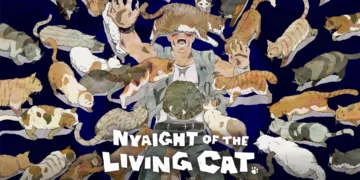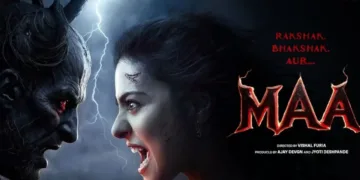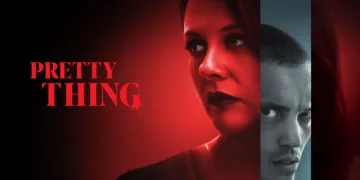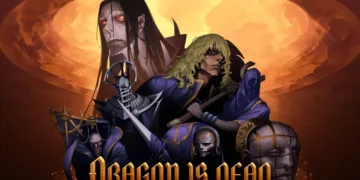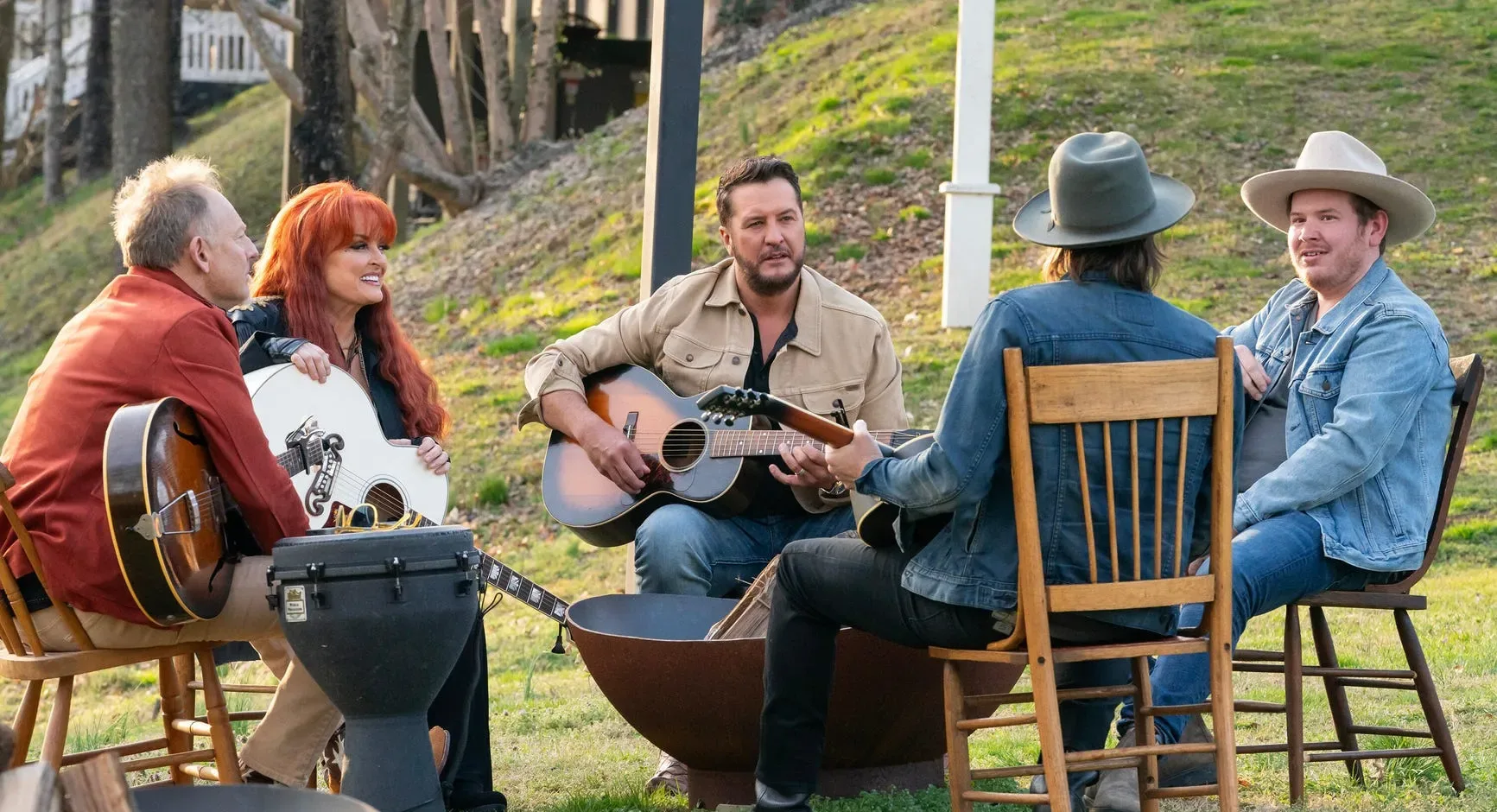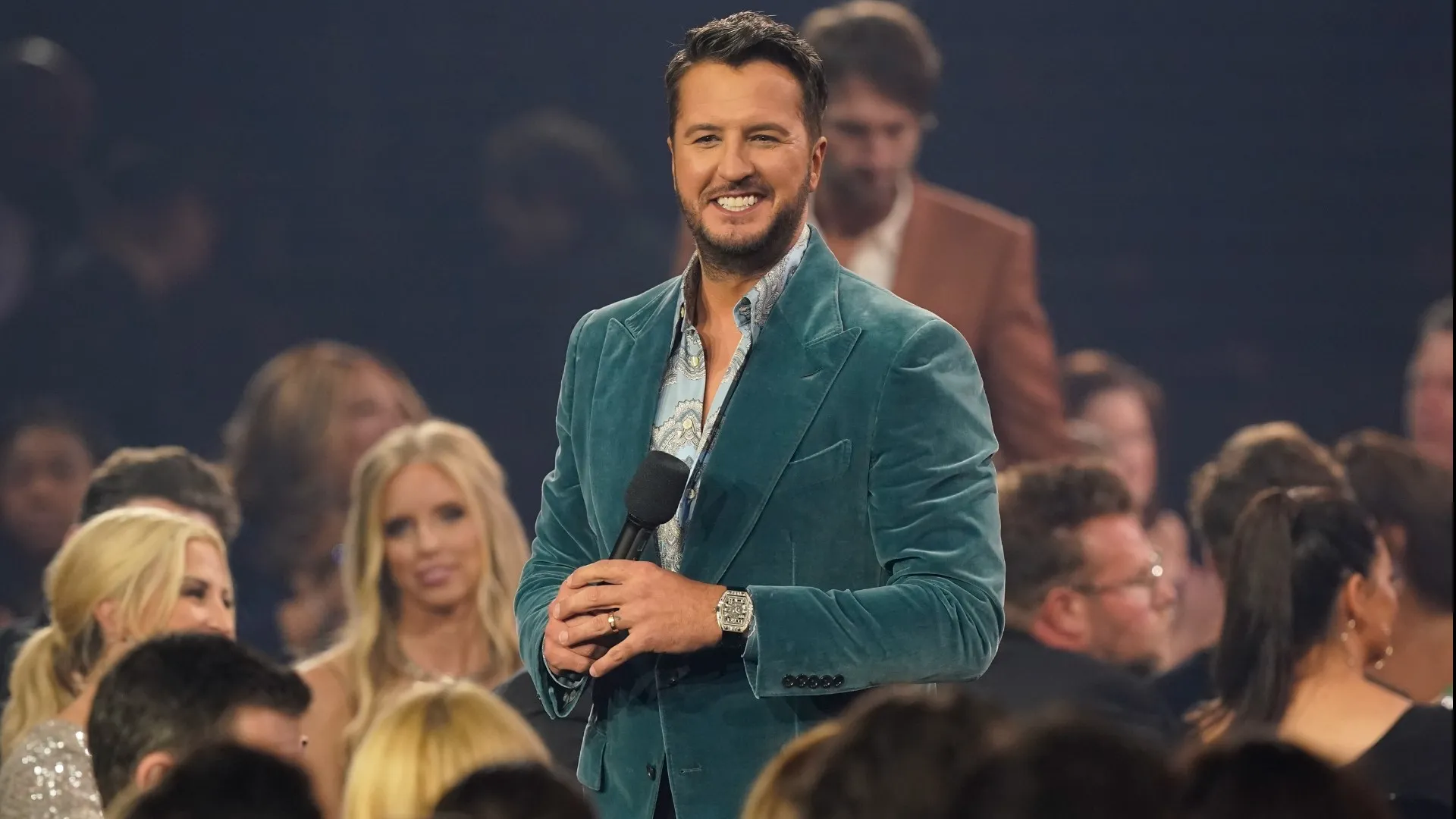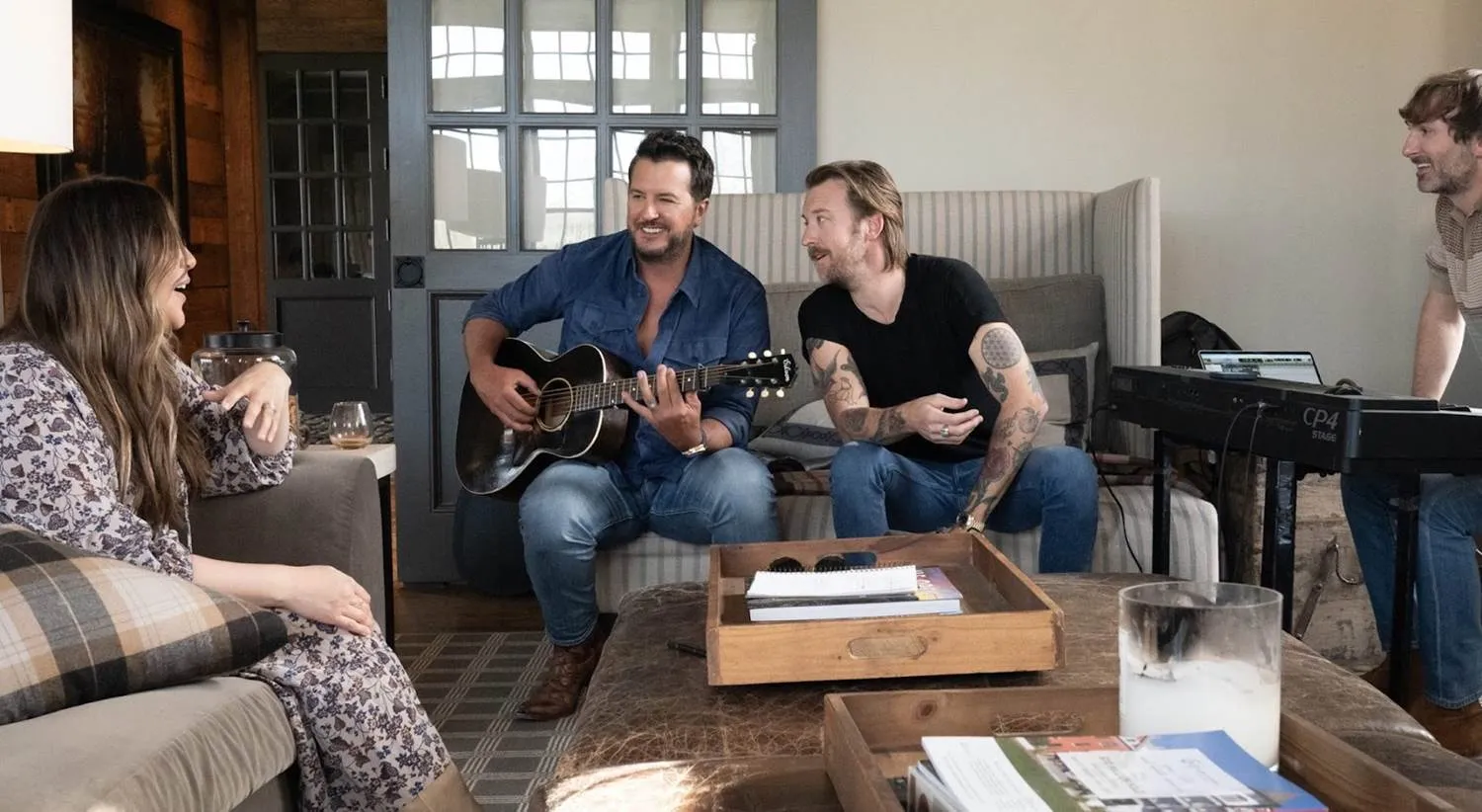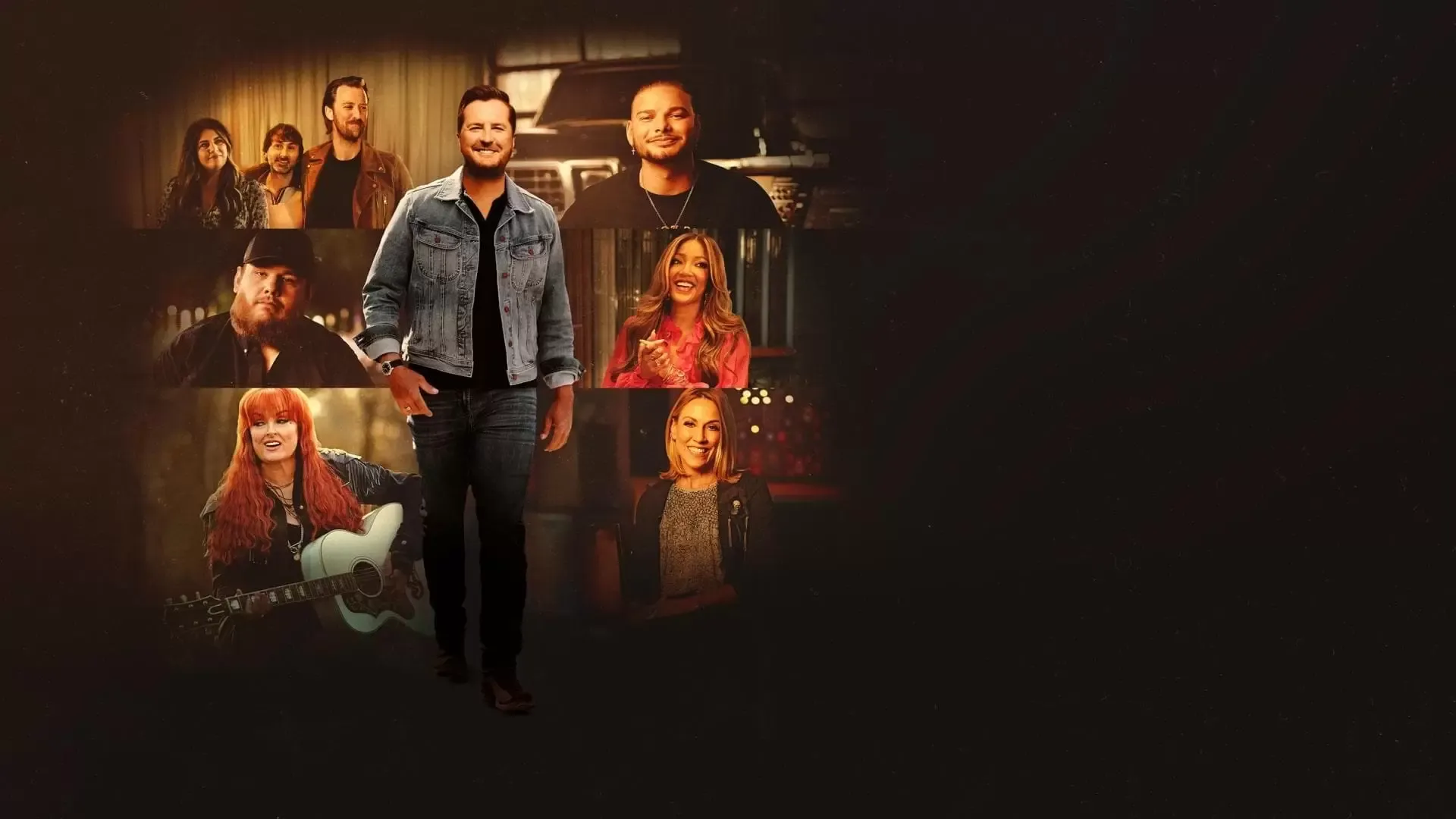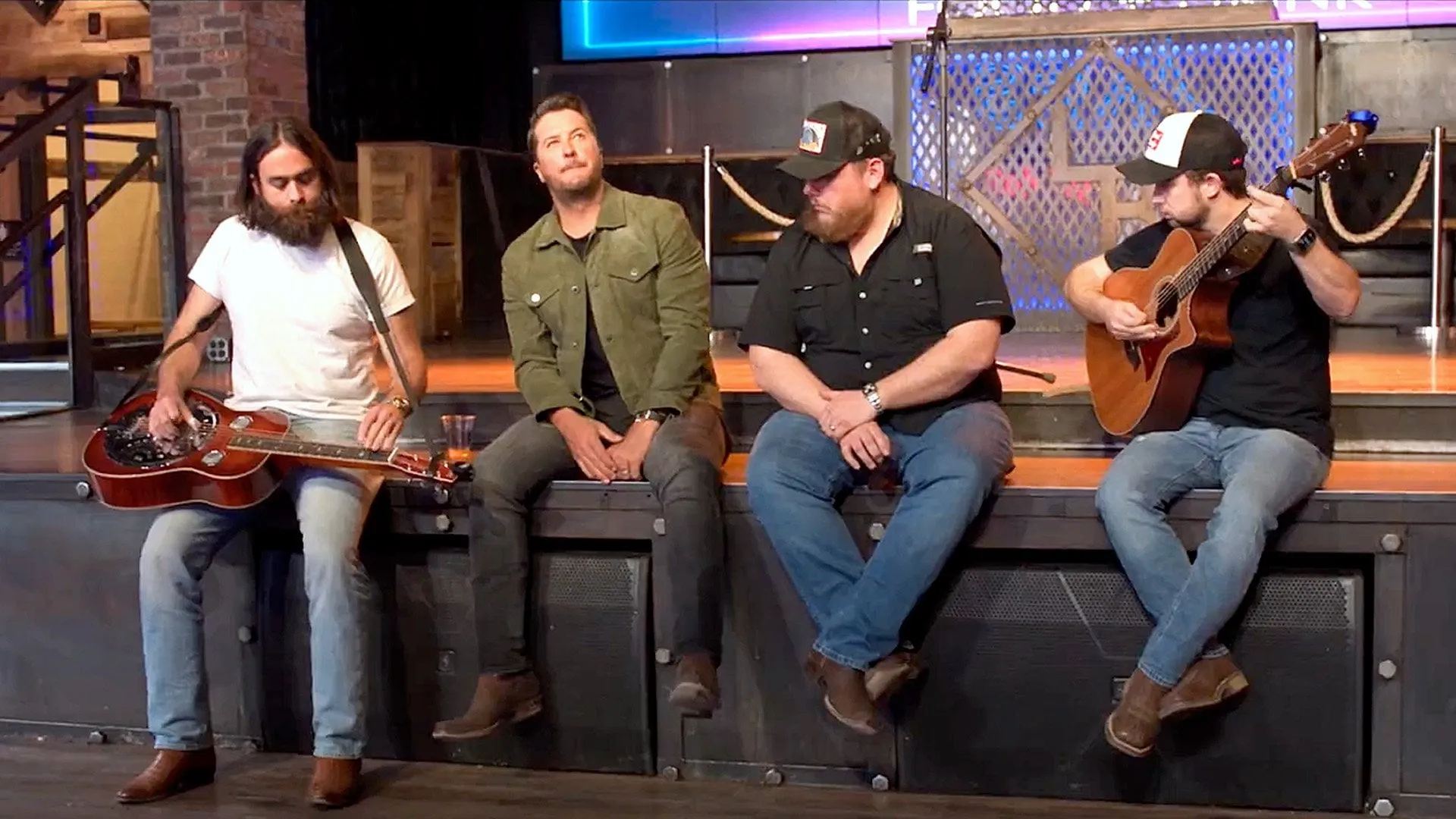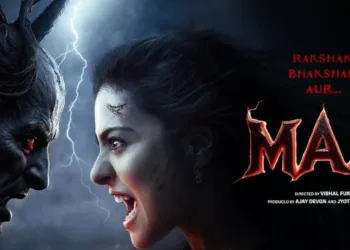Hulu’s It’s All Country, which premiered on November 15th, is a six-part documentary series that celebrates and examines current country music. The series, hosted by Luke Bryan, one of the most famous names in the genre, blends casual talks, live performances, and behind-the-scenes peeks into the lives of artists like Luke Combs, Wynonna Judd, and Mickey Guyton.
The show is about the individuals as much as the music, covering issues ranging from the evolution of country music to its cultural relevance. While the series’ slick production and upbeat tone make it easy to consume, it occasionally feels like a polished highlight reel rather than an in-depth investigation.
Luke Bryan’s warmth and charisma as a host adds to the series’ appeal. His rich roots in country music and easy interaction with guests authenticate the conversations. However, Bryan’s talent as a performer does not always translate into journalistic rigor.
His inquiries are typically broad and surface-level—”What’s next for you?” or “Where did it all begin?”—leaving some potential for deeper, more introspective storytelling unexplored. Nonetheless, his excitement and true appreciation for the genre come through, making him a fascinating, if not very probing, guide along this voyage.
Featured Artists & Their Stories
It’s All Country’s strength is its ability to dig into the personal experiences of its featured artists, allowing viewers to experience country music as more than just a genre—it’s a live, breathing form of storytelling. Luke Combs, for example, is an intriguing case study of how authenticity and perseverance can reshape success in a commercialized sector.
The series shows his early troubles, including being rejected by record labels who thought him “not marketable,” before becoming a two-time CMA Entertainer of the Year winner. What’s compelling about Combs’ ascension is how he relates it to his roots—his appreciation of Tracy Chapman’s “Fast Car” is more than a musical homage; it’s a return to his own goals as a young artist growing up in North Carolina. The series depicts him in a moment of reflection, singing “Little Country Boys,” a song about the intergenerational transmission of stories in the country music tradition, alongside Luke Bryan.
Wynonna Judd’s episode has a distinct tone rooted in legacy and resilience. The show delves into her historic career as a trailblazer and a symbol of survival. Wynonna’s influence is defined not only by her distinctive voice and genre-defying style but also by her role as a mentor to emerging female artists.
A moving moment occurs when she discusses the death of her mother, Naomi Judd, and how this tragedy has strengthened her devotion to uplifting others. This is where the series touches on something deeper: music as a personal and communal act of healing, a surprisingly universal topic.
Meanwhile, Mickey Guyton’s narrative exemplifies how country music may be used to promote social change. Her episode displays an artist who isn’t hesitant to challenge the genre’s limitations, whether by tackling racial injustice in her song “Break Lack Like Me” or by writing lyrics that represent the larger struggles of oppressed populations. Watching her work in the studio, you can feel the palpable conflict between tradition and progress, which Guyton embraces in her work.
Throughout these stories, certain themes emerge that speak to the heart of country music’s enduring popularity. Perseverance in the face of rejection is a common thread among these artists, whether it’s Combs breaking through industry expectations or Guyton overcoming prejudices. Of course, there is the desire for storytelling, which continues to be the genre’s lifeblood. Each performer uses their experiences to create music that resonates well beyond the Nashville skyline, reminding us that country music, at its finest, reflects human resilience and connection.
Exploring Country Music’s Evolution
At its core, country music has always been about storytelling—stories of grief, resilience, and the simple pleasures of life told with a twang. Its roots can be traced back to the early twentieth century when Appalachian folk traditions were combined with blues and gospel influences. From the Carter Family’s early recordings to Hank Williams’ heartfelt laments, the genre emerged as a voice for working-class America.
Over the years, artists like Johnny Cash, Dolly Parton, and Willie Nelson broadened their scope by embracing issues beyond regional boundaries. Nowadays, country music exists in a curious duality: the “pop country” machine of polished radio songs and the emerging alt-country movement, with artists like Tyler Childers and Sturgill Simpson pushing the genre into experimental, contemplative territory. According to It’s All Country, the genre is at a cultural crossroads, reflecting its rich history and growing future.
The artists on It’s All Country embody this evolution, redefining the genre uniquely. Luke Combs, for example, bridges the gap between the country’s traditional ideals and its modern stadium-filling goals. His unpretentious, everyman attitude makes him likable, and his composition, which is based on personal experiences, gives his music an emotional authenticity. He appears to represent a return to the genre’s storytelling roots, even as he dominates its commercial environment.
Mickey Guyton, on the other hand, marks a much-needed and long-overdue movement in country music diversity. Her willingness to address themes of racism and inequality in songs like “B Lack Like Me” gives a genre frequently attacked for its homogeneity a socially conscious edge. She serves as a reminder that country music when done well, can magnify voices that reflect a wide range of American perspectives.
Wynonna Judd, a country music legend in her own right, is still pushing the genre’s emotional and sonic boundaries. She carries on the tradition of pushing boundaries, a characteristic of artists like her mother, Naomi Judd, and their contemporaries during the genre’s golden period, by merging folk, country, and rock influences. Her mentorship of emerging female artists emphasizes the importance of core and generational exchange in keeping country music artists alive.
Together, these artists show how the country is preserving its roots while embracing new viewpoints, making it more dynamic than ever.
Behind the Scenes: Creative Processes & Performances
One of the more intimate and fulfilling features of It’s All Country is its emphasis on the creative processes that drive its featured artists. Lady A’s collaborative songwriting session offers a glimpse into the delicate process of writing a popular song. The series captures the trio exchanging ideas, fine-tuning lyrics and melodies, and embracing the vulnerability that comes with artistic creativity.
Their dynamic has a jazzy improvisational quality, similar to how French New Wave directors like Godard treated dialogue: fluid, organic, and unpredictable. Watching their creative sparks fly serves as a reminder that songwriting is as much about trust and chemistry as it is about technical ability.
Mickey Guyton’s recording session is equally captivating, albeit for very different reasons. Here, the emphasis turns to an artist who uses her voice not only as an instrument but also as a tool for activism. The show takes us inside when she records a new song, her vocals raw with emotion as she puts down words that challenge society’s standards. The session felt more like reclaiming space within a usually limited genre. The editing is crisp but unobtrusive, allowing viewers to fully appreciate Guyton’s creativity without overdramatizing it.
The series’ standout moment is the unexpected duet between Luke Bryan and Luke Combs. Without the sparkle of stadium lights or fancy staging, the two artists relax into an acoustic rendition of “Little Country Boys.” Their harmonies are unrefined but captivating, reflecting the authenticity that distinguishes country music at its finest.
A brief reminder of the genre’s roots in simplicity and heartfelt storytelling, it’s a calm, almost Truffaut-like moment in a series that frequently leans on spectacle. The camera lingers just long enough to capture the shared joy, demonstrating how music can bring artists and audiences together like never before.
Tone & Style: Balancing Entertainment and Insight
It’s All Country has a purposely informal and conversational tone as if you’re casually talking with Luke Bryan over a beer at his Broadway bar. This strategy makes the series extremely accessible, particularly to casual viewers who may not be die-hard country music fans. Stylistically, it is similar to the glossy, personality-driven features you might see on a Sunday morning chat show or an NFL pregame special—slickly edited, fast-paced, and full of feel-good moments.
Its lighthearted tone is reminiscent of comparable artist-led films like My Dirt Road Diary or Friends in Low Places, but it lacks the investigative depth of Ken Burns: Country Music, which took a more historical and analytical approach.
This playful tone has both advantages and disadvantages. On the one hand, the series is entertaining. Moments like Luke Bryan throwing a football with Luke Combs and Wynonna Judd reminiscing about her early days are authentic and entertaining. These scenes highlight the friendship and joy that drives country music.
On the other side, the series frequently overlooks opportunities for deeper understanding. Bryan’s open-ended questions—”Where did it all begin for you?”—rarely prompt his guests to share anything unexpected or thoughtful. As a result, the series can sometimes appear like a promotional highlight reel rather than a thorough examination of the complexities of country music and its artists.
Critique & Missed Opportunities
While It’s All Country succeeds in highlighting country music’s broad appeal, it falls short of providing the depth expected of a six-part series. The interviews, while friendly and chatty, rarely go beyond surface-level tales. Luke Bryan’s inherent charisma leads the show.
However, his questions are frequently formulaic, relying on predictable prompts like “What’s next for you?” rather than probing the artists’ individual problems or creative approaches. This method makes much of the storytelling feel prefabricated, limiting opportunities to discover more personal or unexpected insights.
Furthermore, the series’ emphasis on pop-country artists, who dominate the radio and stadium tours, detracts from the developing alt-country and independent movements. Artists like Tyler Childers, Sturgill Simpson, and Sierra Ferrell (who barely gets a brief mention) have been reshaping the genre for a new age, but their contributions are mostly overlooked. This omission is especially noticeable given that these voices constitute one of the most major cultural revolutions in modern country music, much like the auteur-driven waves of New Hollywood in the 1970s.
The series’ emphasis on polished, mainstream tales is most likely driven by a desire to appeal to a large Hulu audience. However, more diverse perspectives—including artists outside Nashville’s commercial machine—could enhance future seasons.
Consider combining Bryan’s friendly presenting approach with deeper, more layered storytelling that integrates cultural and musical movements from the genre’s edges. By incorporating these different viewpoints, the series may better capture the broad gamut of what country music represents today.
Overall Impact & Recommendation
It’s All Country flourishes thanks to its entertaining host, Luke Bryan. His business knowledge and pleasant personality make him an ideal guide through contemporary country music. The series gives engaging performances and sporadic moments of true insight, especially when it leans into the creative processes of artists like Lady A and Mickey Guyton.
Its clean production and upbeat tone make it a pleasant watch. However, the series lacks depth, with interviews sometimes skimming the surface of their guests’ lives and occupations. Furthermore, its restricted concentration on pop-country artists ignores entire subgenres, like the burgeoning alt-country movement, limiting its reach and cultural relevance.
Fans of mainstream country music and viewers looking for a cheerful, approachable docuseries will appreciate It’s All Country. It’s ideal for casual streaming, whether you’re a die-hard Luke Bryan fan or new to the genre. However, this series may leave you wanting more if you’re seeking a more in-depth or analytical look into the evolution of country music. Final verdict: Stream it, but keep your expectations in check—it’s more of a singalong than a deep dig.
The Review
It’s All Country
It's All Country is a fun, cheerful docuseries that highlights the broad appeal of country music with vivid performances and Luke Bryan's irresistible charm as a presenter. While it offers interesting moments, particularly in its investigation of creative processes and impromptu performances, it frequently skims the surface, leaving deeper insights and more diverse viewpoints untouched. The series fails to capture the full scope of country music's dynamic scene by focusing primarily on pop-country artists. It's a pleasing, feel-good viewing for genre fans. Still, it falls short of its potential for those seeking a more nuanced investigation of country music's roots and present trends.
PROS
- Luke Bryan’s charisma and industry expertise make him an engaging host.
- Entertaining performances and heartfelt moments (e.g., Luke Bryan and Luke Combs’ acoustic duet).
- Insightful glimpses into the creative processes of artists like Lady A and Mickey Guyton.
CONS
- Lack of depth in interviews, with surface-level questions that rarely lead to meaningful revelations.
- Narrow focus on pop-country artists, overlooking alternative and independent country movements.
- Missed opportunities to explore the genre’s historical and cultural evolution in greater detail.
- Feels more like a promotional highlight reel than a comprehensive documentary.


























